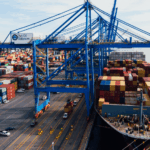Introduction to Sustainable Procurement
As sustainability professionals, we often talk about innovation and impact — but few tools hold as much untapped potential as public procurement. Representing nearly 14% of the European Union’s GDP, public spending is not just administrative: it’s transformative.
When governments choose sustainable suppliers and low-emission solutions, they can accelerate Europe’s green transition while setting global benchmarks for responsible growth. This approach — known as Sustainable Procurement — goes far beyond compliance. It’s a strategy that can reshape industries, decarbonize supply chains, and stimulate green innovation.
In my two decades of experience advising organizations and governments through the Center for Sustainability and Excellence (CSE), I’ve seen that how we buy can be as impactful as how we produce.
The Benefits of Sustainable Procurement
Sustainable procurement is not a policy ideal — it’s a market reality in the making. By integrating sustainability criteria into tenders and contracts, the public sector can drive innovation in critical areas like green steel, circular construction materials, and electric transport systems.
Beyond its environmental impact, sustainable procurement also strengthens Europe’s strategic autonomy — reducing dependency on high-carbon imports and encouraging homegrown innovation.
However, the “green premium” remains a real challenge. Sustainable solutions can still cost more upfront, particularly in developing markets. Yet, as I often emphasize in executive trainings, the true measure of sustainability is long-term value, not short-term cost. When designed properly, sustainable procurement enhances efficiency, resilience, and competitiveness — both for governments and suppliers.
Europe’s Trilemma: Decarbonization, Autonomy, and Stability
The European Union faces what I call the sustainability trilemma:
-
Decarbonizing the economy,
-
Achieving strategic independence, and
-
Maintaining fiscal stability.
Balancing these priorities is no easy task. Overly strict sustainability requirements can increase costs and limit competition, while focusing solely on the lowest price can stall climate goals.
The path forward lies in evidence-based, balanced procurement frameworks. Policies must incentivize sustainability without distorting markets or overburdening public finances. In practice, that means integrating sustainability gradually, guided by real data, impact metrics, and consultation with industry stakeholders.
The Importance of Data and Accountability
Data is the foundation of trust in any sustainability framework. Yet, most EU member states still lack consistent tracking of how “green” their procurement really is.
A robust data and accountability framework would include:
-
Unified sustainability metrics across the EU,
-
Digital monitoring platforms managed by independent authorities (e.g., European Environment Agency),
-
And mandatory supplier disclosures for Scope 3 emissions and ESG certifications.
The European Commission has already highlighted that consistent data collection is essential to reach net zero by 2050. Without it, sustainable procurement risks remaining a slogan rather than a solution.
As someone who has evaluated dozens of ESG strategies globally, I can attest: transparency builds credibility, and credibility drives adoption.
From Policy to Practice: Where Procurement Delivers the Most Impact
Sustainable procurement has its strongest leverage in high-impact sectors, where public spending meets high emissions:
-
Construction and infrastructure, where greener cement and steel can drastically cut emissions.
-
Transport, where electrification and smart mobility systems redefine urban efficiency.
-
Energy, through renewable sourcing and energy-efficient retrofits.
-
Manufacturing, where circular materials and eco-design can close the loop.
Aligning procurement strategies with existing EU tools — such as the Emissions Trading System (ETS) and the Carbon Border Adjustment Mechanism (CBAM) — is critical. This alignment prevents policy overlap, creates fair competition, and ensures that climate ambition supports economic growth rather than constraining it.
What It Means for Businesses
For companies, sustainable procurement is the new frontier of ESG leadership. Public contracts increasingly reward suppliers who demonstrate:
-
Transparent ESG performance,
-
Certified low-carbon products, and
-
Credible Scope 3 emission tracking.
Businesses that adapt early will gain a competitive advantage — not only in public tenders but also in private markets where ESG maturity is now a prerequisite for investment.
Through our work at CSE and the Sustainability Academy, we’ve seen how structured education can bridge the gap between ambition and execution. Programs like the Online Certificate on Sustainable Supply Chain Management and the Certified Sustainability (ESG) Practitioner Program – Advanced Edition equip professionals with the tools to lead sustainable transformation across sectors.
Conclusion: Turning Policy into Progress
Sustainable procurement is more than a policy instrument — it’s Europe’s next green growth engine. By combining environmental ambition with data-driven decision-making, it can unlock innovation, accelerate decarbonization, and create value that endures.
As I often remind ESG professionals: the transition is not only technological but institutional. It depends on how we define responsibility, measure progress, and invest in the future.
Europe now has an opportunity to lead by example — to show that sustainable procurement is not a constraint, but a strategic investment in resilience, trust, and competitiveness.









